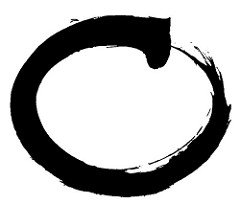Leonardo da Vinci 1452 – 1519, was an Italian Renaissance polymath: painter, sculptor, architect, musician, mathematician, engineer, inventor, anatomist, geologist, cartographer, botanist, and writer. His genius, perhaps more than that of any other figure, epitomized the Renaissance humanist ideal. Leonardo has often been described as the archetype of the Renaissance Man, a man of “unquenchable curiosity” and “feverishly inventive imagination”. He is widely considered to be one of the greatest painters of all time and perhaps the most diversely talented person ever to have lived. According to art historian Helen Gardner, the scope and depth of his interests were without precedent and “his mind and personality seem to us superhuman, the man himself mysterious and remote”. Marco Rosci states that while there is much speculation about Leonardo, his vision of the world is essentially logical rather than mysterious, and that the empirical methods he employed were unusual for his time.
Leonardo was, and is, renowned primarily as a painter. Among his works, the Mona Lisa is the most famous and most parodied portrait and The Last Supper the most reproduced religious painting of all time, with their fame approached only by Michelangelo‘s The Creation of Adam. Leonardo’s drawing of the Vitruvian Man is also regarded as a cultural icon, being reproduced on items as varied as the euro coin, textbooks, and T-shirts. Perhaps fifteen of his paintings survive, the small number because of his constant, and frequently disastrous, experimentation with new techniques, and his chronic procrastination. Nevertheless, these few works, together with his notebooks, which contain drawings, scientific diagrams, and his thoughts on the nature of painting, compose a contribution to later generations of artists rivalled only by that of his contemporary, Michelangelo. More information about Michaelangelo on Artsy’s Michaelangelo page
Leonardo is revered for his technological ingenuity. He conceptualised a helicopter, a tank, concentrated solar power, an adding machine,[6] and the double hull, also outlining a rudimentary theory of plate tectonics. Relatively few of his designs were constructed or were even feasible during his lifetime,[nb 2] but some of his smaller inventions, such as an automated bobbin winder and a machine for testing the tensile strength of wire, entered the world of manufacturing unheralded.[nb 3] He made important discoveries in anatomy, civil engineering, optics, and hydrodynamics, but he did not publish his findings and they had no direct influence on later science. Wikipedia
More information on Artsy’s Leonardo da Vinci page
A small truth is better than a great lie.
All our knowledge has its origin in our perceptions.
Amid the vastness of the things among which we live, the existence of nothingness holds the first place.
Art is never finished, only abandoned.
As a well-spent day brings happy sleep, so life well used brings happy death.
Being willing is not enough; we must do.
Good judgment is born of clear understanding.
He who possesses most must be most afraid of loss.
Human subtlety will never devise an invention more beautiful, more simple or more direct than does nature.
I know that many will call this useless work.
